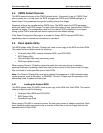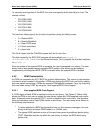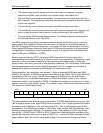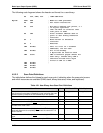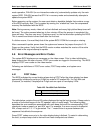
Basic Input Output System (BIOS) STL2 Server Board TPS
4-44
To manually load a portion of the BIOS, the user must specify which data file(s) to load. The
choices include
•
PLATCBLU.BIN
•
PLATCXLU.BIN
•
PLATCXXX.BIN
•
PLATCXLX.BIN
•
PLATCXXU.BIN
The last three letters specify the functions to perform during the flash process:
•
C = Rewrite BIOS
•
B = Rewrite Bootblock
•
L = Clear LOGO area
•
U = Clear user binary
•
X = place hold
This file is loaded into the PHLASH program with the /b=<bin file>.
The disk created by the BIOS.EXE program will automatically run phlash /s
/b=PLATCXLU.BIN command in non-interactive mode. For a complete list of phlash switches,
run phlash /h.
Once an update of the system BIOS is complete, the user is prompted for a reboot. The user
binary area is also updated during a system BIOS update. User binary can be updated
independently of the system BIOS. CMOS is cleared when the system BIOS is updated.
4.5.2 OEM Customization
An OEM can customize the STL2 BIOS for product differentiation. The extent of customization
is limited to what is stated in this section. OEMs can change the BIOS look and feel by adding
their own splash screen/logo. OEMs can manage OEM-specific hardware, if any, by executing
their own code during POST by using the “User-supplied BIOS Code Support.”
4.5.2.1 User-supplied BIOS Code Support
A 16 KB region of flash ROM is available to store a user binary. The Phoenix* Phlash utility
allows the OEM or end user to update the user binary region with OEM supplied code and/or
data. At several points throughout POST, control is passed to this user binary. Intel provides
tools and reference code to help OEMs create a user binary. The user binary must adhere to
the following requirements:
•
To allow detection by BIOS and protection from run time memory managers, the user
binary must have an option ROM header (i.e., 55AAh, size).
•
The system BIOS performs a scan of the user binary area at predefined points during
POST. Mask bits must be set within the user binary to inform the BIOS which entry
points exist.










